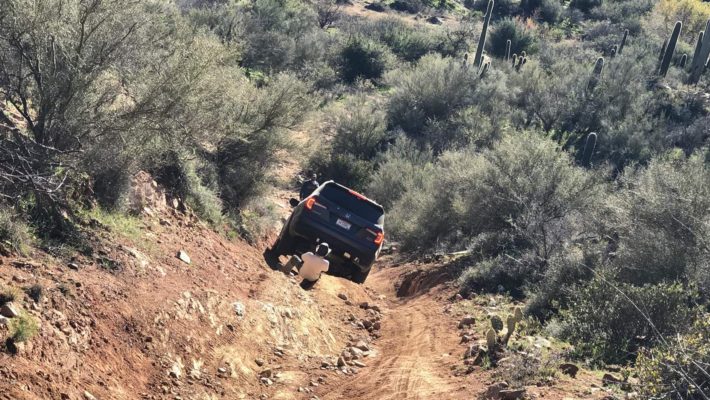The list of vehicles designed for true off-road use is short, and the list of vehicles capable of much more than a gravel driveway isn’t much longer. That said, there are thousands of kilometers of graded dirt forestry roads in BC that any SUV or Crossover can drive. If, however, you want to get further off the beaten path you need to know what your vehicle is capable of and you especially need to know what it is NOT capable of.
No matter how good (or enthusiastic) you are, your Cross-Over or Sport SUV is not designed to be a mud bogger or a rock crawler. Sure you can add a lift, larger tires, skid plates, bumpers, and maybe even a winch, but ultimately all that equipment is bolted to sheetmetal that will fail far earlier than a steel truck frame will. As an example, the stock recovery points on the front of my Jeep are rated for 8,000 lbs. each (and you can connect to both for 16,000 lbs) whereas the single stock tow point on the front of my Subaru is rated for 3,000 lbs. (Less than the weight of the vehicle). In other words, if you sink your Cross-Over to the doors in mud you probably will damage it trying to get it out.
By the same token your Cross-Over or Sport SUV probably does not have the suspension travel, shock absorbers, tire size, or skid plates or rollover protection that something like a Jeep Wrangler has, and even if you spend thousands of dollars modifying it you will be risking serious damage if you try to follow a near-stock Jeep up a rough trail. That’s OK though. Each type of vehicle has its use and purpose. Hopefully you have chosen the vehicle that suites yours.
The way to find out what your vehicle really is capable of is from other people who own similar rigs. Join a club, watch videos, and go on Soft-Roader runs. Get out there and have some fun, just do it in stages and work your way up.

